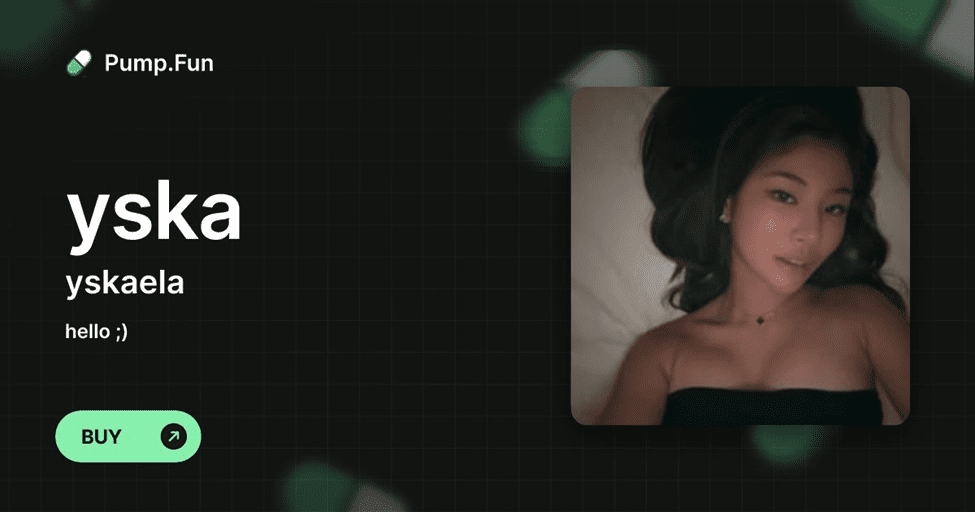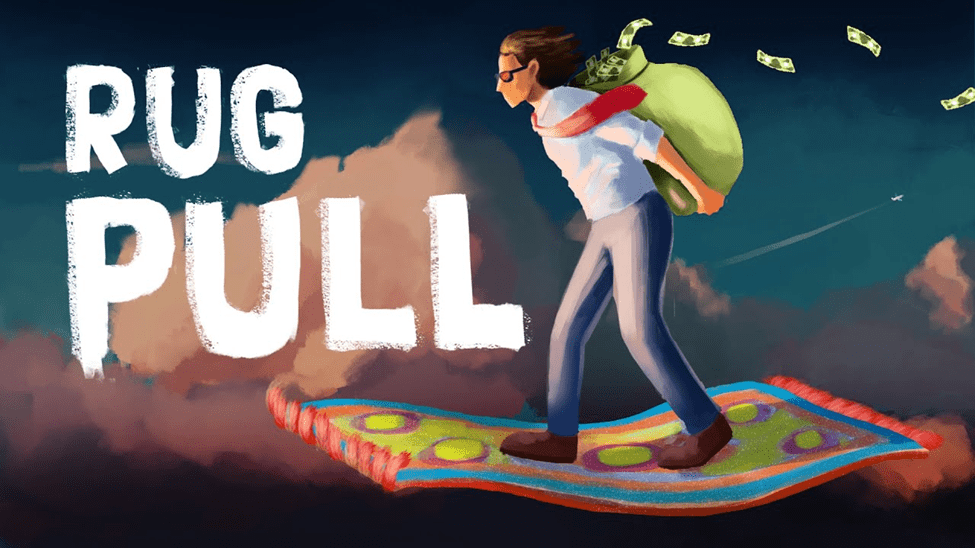
A new Solana-based meme token, YSKA (yskaela), has burst onto the scene in the past 48 to 72 hours, a classic example of the explosive, high-stakes world of meme coins.Its introduction was characterized by a frenzy of activity, including quick price spikes, multi-million dollar trading volumes, and the abrupt formation of new liquidity pools on Solana-based exchanges.
This unexpected spike has created the perfect climate for a parabolic run, with early investors earning large profits and social chatter reaching fever pitch. However, this is also a textbook example of excessive danger.
The very conditions that can make a select few rich, rapid pumps, thin liquidity outside of concentrated trading windows, and a heavy dose of social hype, are the same ones that often precede a rug pull, a type of exit scam where developers abandon the project and drain its value.
As a result, many ordinary investors who jump in late are left holding tokens that are suddenly worthless. This article explores the warning signs of such a scheme, using the YSKA rally as a case study, and offers practical advice on how to spot red flags and protect your capital in this volatile market.
What Happened With YSKA
YSKA’s meteoric rise on Solana is a textbook case of how quickly meme coins can erupt and just as quickly collapse. In less than a week, the token went from obscurity to headline-making price spikes, with trading volumes in the millions and social chatter accelerating the frenzy.
For early buyers, the rapid ascent offered the chance for outsized gains, but for the broader market, it also raised immediate concerns about sustainability.\On-chain data highlights the mechanics behind the surge. Multiple liquidity pools were created almost overnight, giving the appearance of market depth while masking how fragile that liquidity actually was.
At the same time, speculative buying drove wild intraday swings, with prices rising and falling sharply within hours. Such patterns are often fueled more by hype than fundamentals, setting up the perfect backdrop for a “pump” phase of a pump-and-dump cycle.
For investors, this combination of sudden liquidity creation, disproportionate trading activity relative to the token’s age, and extreme price volatility is a glaring red flag. History shows that these conditions often precede swift crashes, leaving latecomers holding bags of near-worthless tokens.
While YSKA’s story is still unfolding, the structure of its rally strongly resembles past schemes that ended in brutal wipeouts for retail traders.
High Risk, Low Liquidity: Why YSKA Looks Like a Rug Pull Setup
One of the most harmful exit scams in cryptocurrency is a rug pull, in which developers or major holders drain the pool of liquidity for a token and disappear, leaving regular investors with tokens they are unable to sell. In the uncontrolled realm of meme currencies and microcaps, where project teams frequently maintain control over supply, liquidity, and listings, these scams flourish.

The likelihood of a rapid collapse increases significantly in the absence of accountability or transparency. Recent on-chain behavior from YSKA exhibits a number of the defining warning indicators. Sharp price spikes fueled by social media chatter, abrupt increases in trading volume, and the quick development of new liquidity pools all coincided with the token’s introduction.
Pump-and-dump cycles are frequently triggered by this type of forceful narrative, particularly when it is connected to meme culture or celebrity references. The dangers for late purchases are exacerbated when you consider that liquidity is still limited and concentrated in a small number of wallets.
To be clear, none of this proves that YSKA’s creators intend to abandon the project. However, the setup strongly resembles patterns analysts have flagged in past rug pulls. For potential investors, the takeaway is caution, verify whether the contract has been renounced, ensure liquidity is locked, and review wallet distribution closely.
Without these safeguards, YSKA should be treated as an extremely speculative play, where the probability of loss is at least as high as the chance of reward.
Staying Safe: How Traders Protect Themselves from Rug Pull
Traders frequently use a checklist of steps to lower risk when tokens like YSKA exhibit indicators that concern analysts. Following specific recommended practices can help spot warning indicators early and reduce possible losses, but no technique can ensure safety in meme-driven markets.
Take into account the following precautions if you’re tracking volatile coins like YSKA:
- Verify the contract. Check on-chain for ownership renouncement or timelocked liquidity. If the project team still controls the liquidity pool, that’s a major red flag.
- Analyze wallet distribution. Use reliable on-chain analytics (DEX trackers, blockchain explorers) to see who holds the largest balances and whether significant recent transfers suggest coordinated dumps.
- Stay skeptical of hype. Social buzz tied to celebrities, memes, or coordinated “pump” calls often precedes sharp reversals.
- Limit exposure. Never invest more than you can afford to lose. In meme-heavy markets, keep allocations small to protect your overall portfolio.
From YSKA to the Next Bet: Bitcoin Hyper and Maxi Doge in Focus
As tokens like YSKA experience explosive runs followed by sharp corrections, many retail traders look for the next opportunity to capture short-term gains. This often leads to “rotation plays,” where profits or attempts to recover losses are funneled into new projects generating buzz.

At the moment, two tokens stand out in presale chatter and “top picks” roundups: Bitcoin Hyper and Maxi Doge. This month, aggregator lists and cryptocurrency commentary sites have highlighted both, indicating an increase in interest from speculative traders looking for momentum.
The goal of Bitcoin Hyper, a utility-driven initiative, is to speed up and simplify Bitcoin payments for daily use. It pitches itself as an infrastructure play, with promises of streamlined transactions and network improvements.
However, claims of “faster payments” in the blockchain space are notoriously easy to market but difficult to deliver. Serious investors will need to dig into the technical side, the project’s whitepaper, testnet performance, and roadmap execution. Without tangible evidence of progress, these promises remain speculative marketing points rather than proven utility.
Maxi Doge, by contrast, leans heavily into the meme coin model but adds staking-style mechanics and community reward structures to keep holders engaged. This approach can extend hype cycles by incentivizing investors not to sell, but it also raises questions about sustainability.
Many meme projects that integrate staking do so as a way to artificially stretch out interest rather than to build genuine long-term value. Traders considering Maxi Doge should closely examine its tokenomics to see whether the staking rewards are supported by real utility or simply designed to delay inevitable sell pressure.
What Traders Should Remember Before Chasing the Next Hype
The rise of YSKA shows just how quickly meme-coin excitement can spiral into danger. Rapid price fluctuations, newly formed liquidity pools, and constant social media activity produced an environment that was conducive to both disastrous losses and windfall gains in a matter of days.
Historically, rug pulls and pump-and-dump cycles have been spurred by these identical circumstances, leaving latecomers with tokens whose value drops virtually overnight. For anyone still eyeing YSKA, the reality is clear, it’s an extremely high-risk play, and every decision should be backed by careful on-chain verification.
This lesson doesn’t stop with YSKA. New tokens like Bitcoin Hyper and Maxi Doge are now capturing trader attention in presale roundups and crypto commentary feeds. Both make appealing claims, such as quicker Bitcoin payments in one instance and staking mechanisms and community rewards in another, but they are still speculative pitches at this point.
These assertions carry the same risks that have characterized several short-lived ventures before them, unless they are backed up by demonstrable technical outcomes, real-world acceptance, or sustainable tokenomics.
Whether the hype centers on a new Solana meme coin or the latest presale “top pick,” the principle remains the same, do your due diligence. Scrutinize contracts, liquidity locks, and token distribution, and never allocate more than you can afford to lose.
In crypto’s high-velocity markets, hype nearly always outpaces fundamentals and traders who forget that lesson risk becoming the exit liquidity for someone else’s profit.

